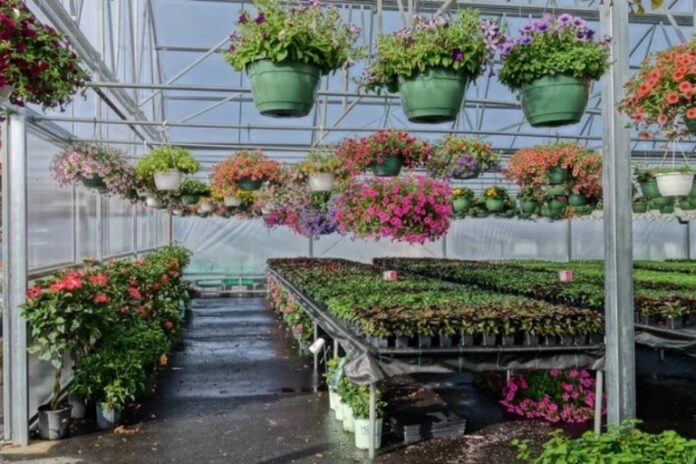The transition towards a sustainable agriculture industry is more crucial than ever, and one pivotal aspect of this shift is utilizing commercial greenhouses. These structures not only extend the growing season but also enhance crop production by providing controlled environments that optimize growth conditions.
An effective commercial greenhouse allows for a stable and efficient agricultural operation that can adapt to the evolving demands of the market. This guide offers comprehensive insights into the essential components of building and operating a successful commercial greenhouse, catering to both seasoned farmers and newcomers alike.
1. Understanding The Types and Their Functions
When embarking on the journey of establishing a commercial greenhouse, the first step involves selecting the appropriate type that aligns with your agricultural objectives. Traditionally, greenhouses can be classified into several categories, including glass houses, polycarbonate structures, and hoop houses.
Each type offers unique advantages. For example, glass houses provide excellent natural light and durability, while hoop houses are more cost-effective and easier to construct. A vital factor to consider is the climate in which you operate. Regions with harsher weather conditions may benefit from more robust structures, while milder climates offer flexibility in design.
It’s also important to integrate modern technology into your greenhouse. Implementing sustainable commercial greenhouses ensures that your operation remains environmentally friendly while maximizing yield. Passive and active heating systems should be evaluated to maintain optimal growing environments.
2. Designing Your Greenhouse Layout for Maximum Efficiency
Once you determine the greenhouse type, the subsequent step is to design its layout. Effective planning dramatically influences productivity levels and workflow organization. Considerations should include the paths between rows, access points for equipment, and zones for different crop types.
An efficient design incorporates these aspects to streamline harvesting and maintenance processes. Integrating space for storage and equipment is also critical. Ensure easy access to tools, supplies, and personal protective equipment to facilitate smooth operations. An ideal layout allows for flexibility, adapting over time as your crop selection and production increase.
The cultivation method, whether you choose soil or hydroponics, will also determine your layout specifics. Hydroponic systems, for example, require more precise spacing and can alter the design significantly when compared to traditional soil-based planting.
3. Choosing the Right Materials for Construction
The materials you choose for constructing a greenhouse have a significant impact on its durability and efficiency. Common choices include polycarbonate, glass, and polyethylene film. Polycarbonate panels, while higher in initial cost, provide excellent insulation and durability, making them a worthwhile investment over time.
Access to quality materials at competitive prices helps manage construction budgets effectively. Furthermore, also considers structural framing materials. Galvanized steel and treated wood are popular options, each with its advantages depending on factors like longevity and maintenance.
Environmental factors play a role in selection as well. Areas prone to heavy winds necessitate stronger materials to withstand Nature’s elements. It’s crucial to assess insulation properties and heat retention capabilities, as these will influence energy costs and growing conditions throughout the year.
4. Implementing Automated Systems for Improved Management
With the advancement of technology, incorporating automated systems into your commercial greenhouse can lead to enhanced productivity. Automated systems control environmental conditions, irrigation, and nutrient delivery, freeing up time for farmers to focus on other aspects of management.
Installation of these systems requires upfront investment, but they often pay off in the long run through increased efficiency. Climate control systems such as HVAC and ventilation ensure optimal conditions for plant growth, regulating temperatures and humidity levels continuously.
Irrigation systems, particularly drip irrigation, allow for precise water delivery tailored to plant needs without wastage. Similarly, nutrient delivery systems enable precise nutrient monitoring and adjustment, promoting healthier crops. Investing in monitoring tools such as sensors can also enhance decision-making.
5. Maintaining Your Greenhouse for Optimal Production
Once operational, regular maintenance is essential for the longevity and productivity of your greenhouse. Developing a routine schedule for cleaning, inspecting, and repairing elements is crucial. Keeping surfaces, plants, and equipment in optimal condition helps prevent disease and inefficiencies.
Temperature fluctuations or poor ventilation can quickly create unfavorable conditions for crops. Consistently monitor the greenhouse environment, checking for potential issues that detract from plant health. Regular checks on irrigation systems and nutrients provided to the plants are equally important, particularly in hydroponic setups.
Adverse weather can affect environmental systems and structures, so it’s wise to prepare for unexpected changes. Inspecting the integrity of glass or plastic coverings regularly ensures effectiveness for insulation and light exposure.
6. Understanding Regulations and Sustainability Practices
Legal requirements play a significant role in operating a commercial greenhouse. Understanding local zoning laws, health regulations, and Environmental Protection Agency (EPA) guidelines is essential to ensure a compliant operation. Many regions have specific regulations pertaining to water usage and waste disposal, which are crucial for sustainable practices.
Ecological impacts must also guide the operational decisions you make. Consider certifications in organic or sustainable farming as they can enhance marketability and attract consumers willing to pay premium prices for responsibly sourced products. Establishing partnerships with local environmental organizations can also boost credibility and community engagement.
Conclusion
In summary, building and operating a commercial greenhouse requires thorough planning and dedication. By understanding the types, materials, and advancements available, you can create a sustainable and efficient growing environment.
